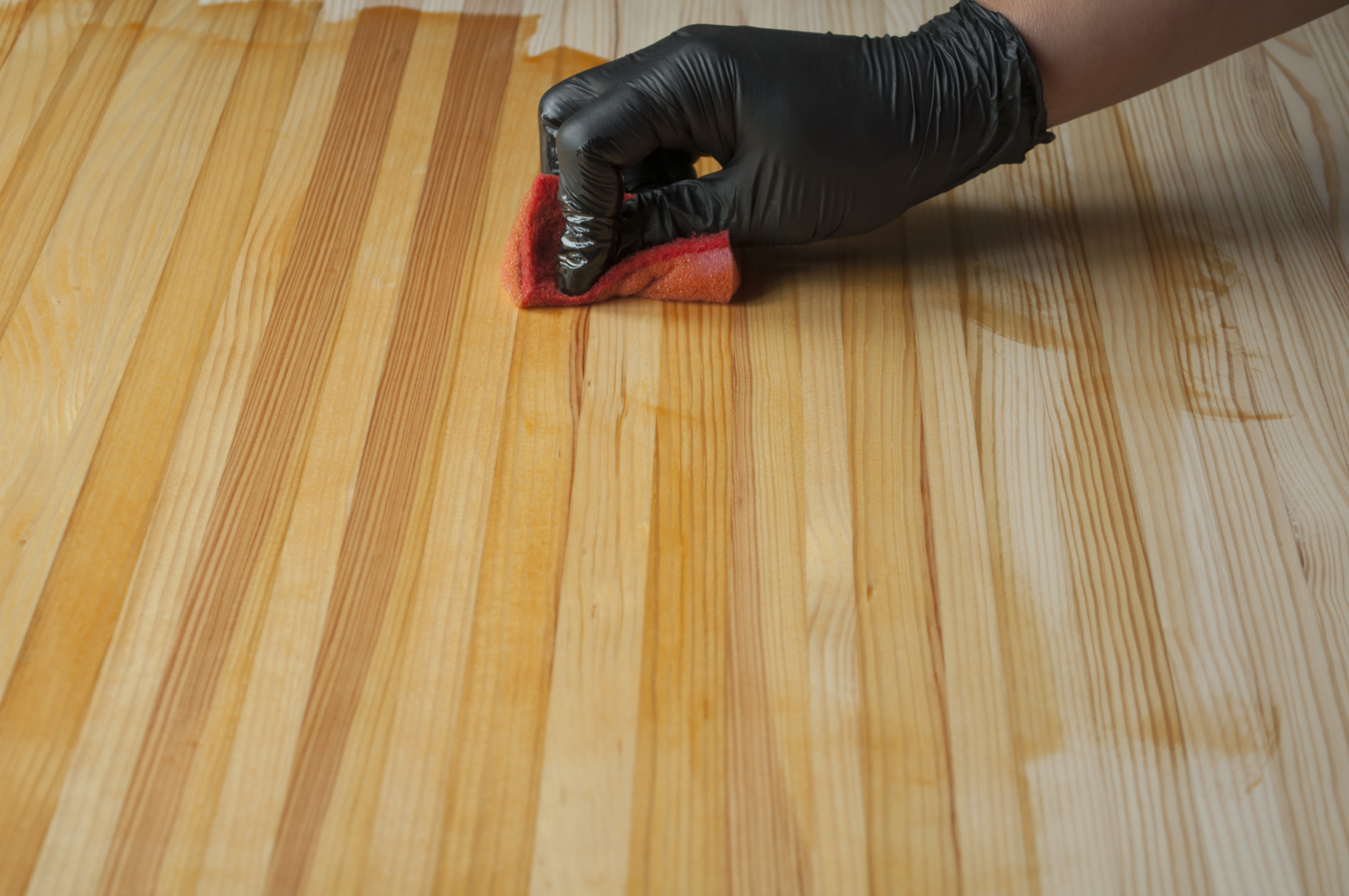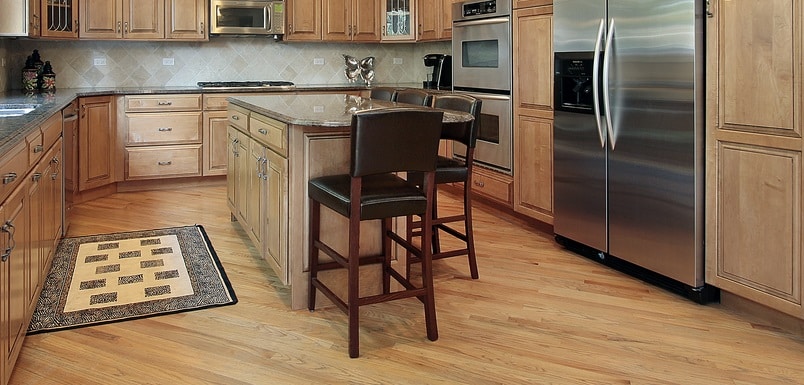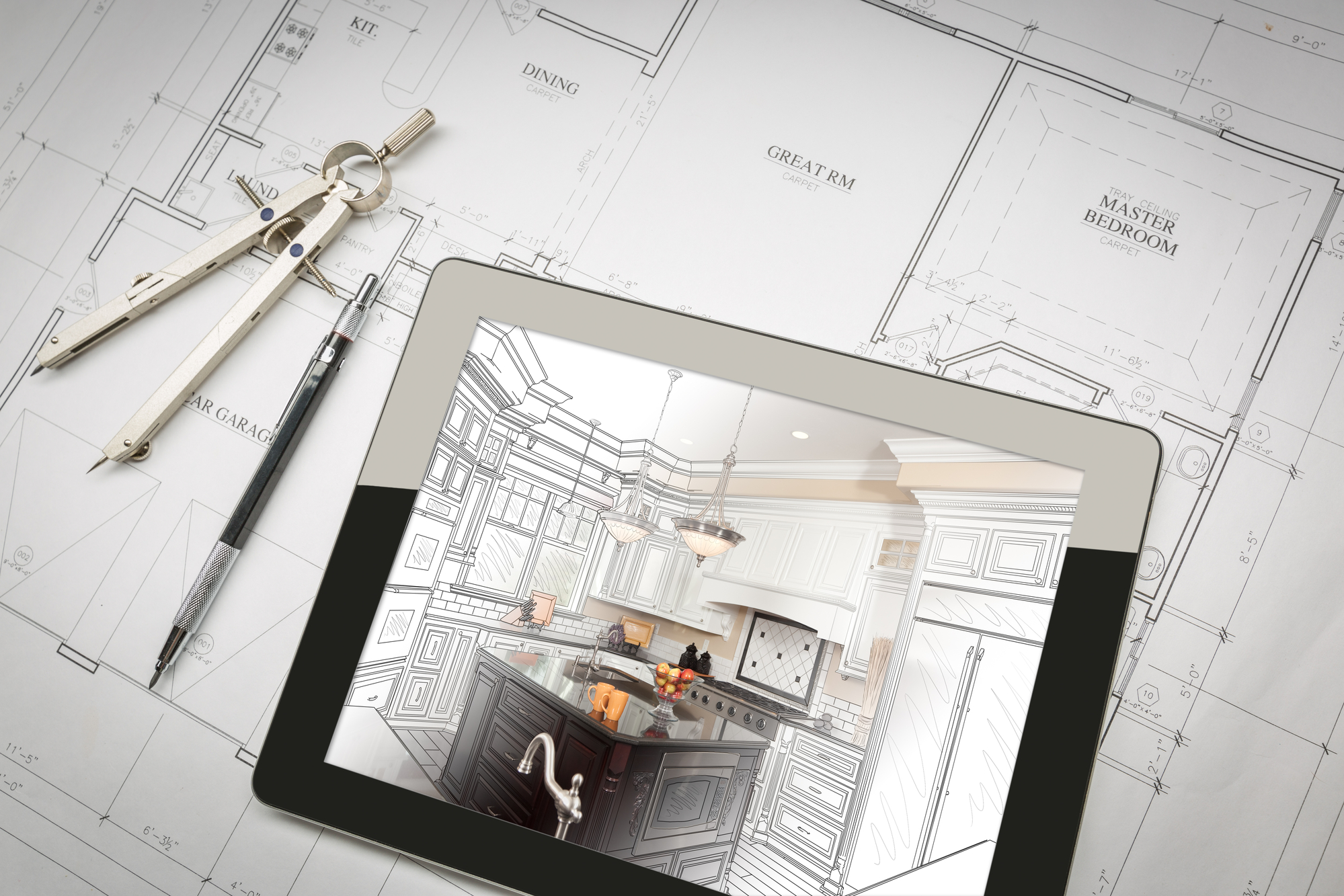Transform Your Home with Waterproof Vinyl Flooring August 26, 2024· by helium_seo Hardwood flooring has long been a favorite choice for homeowners
Read More →Transforming Your Home with Laminate Flooring

Few things transform a space as dramatically as new flooring. Laminate is an innovative and stylish solution with flooring options, including laminate wood floor, stone, and tile. At a fraction of the cost of other flooring materials, laminate is an appealing choice for those looking to build their dream home without breaking the bank.
Ready to dive in? Keep reading below, and don’t forget to see our flooring guide for more insight.
Why Choose Laminate?
Laminate is a synthetic product engineered to mimic the appearance and authentic textures of natural materials like hardwood, stone, and tile. It consists of multiple layers fused together under high pressure and heat, resulting in a durable and resilient flooring material. When choosing a laminate floor, consider the room traffic, design, and installation type to get the best choice for your space. Some popular laminate types include:
- Laminate wood floor: Laminate wood floors mimic the appearance of various wood species, such as oak, maple, and hickory, complete with realistic grain patterns and authentic textures.
- Stone-look laminate: Replicates the elegance and authentic textures of natural stone, like marble, granite, and travertine, without the price tag or maintenance requirements.
- Tile-look laminate: Offers the classic beauty of ceramic or porcelain tile, with the added benefit of a warmer, more comfortable surface underfoot.
- Waterproof laminate flooring: Designed to withstand moisture, waterproof laminates feature a water-resistant core and tight-locking mechanisms that prevent water from seeping through the seams. Water-resistant laminates are an ideal choice for moisture-prone areas like kitchens, bathrooms, and laundry rooms. If your space needs water resistance, but waterproof laminate isn’t right for you, consider choosing waterproof vinyl flooring.
Noteworthy Benefits
As a flooring option, laminate’s affordability and ease of installation make it an attractive choice for homeowners designing their dream homes. Discover the benefits of vinyl flooring to compare material options.
Whether renovating a single room or coordinating between spaces, understanding laminate’s advantages can help you make an informed investment:
- Affordability: Laminate is considerably less expensive than hardwood, stone, or tile, allowing you to achieve the authentic textures of these high-end looks on a budget.
- Durability: Its tough wear layer and water-resistant options help laminate resist scratches, dents, and stains, making it well-suited for high-traffic areas and homes with pets or children.
- Easy installation: Most laminate has the same installation type featuring a click-lock system, which enables DIY enthusiasts to install it quickly and easily without needing glue, nails, or pro services.
- Low maintenance: Laminate requires minimal upkeep, as it can be easily cleaned with a damp mop or vacuum and does not require waxing or polishing.
What to Look for in a Laminate Floor
When shopping for a laminate floor, several key factors should be considered so you select a quality product that will stand the test of time. Evaluating your selection’s durability, thickness, and environmental impact will keep your laminate floor looking great and performing for years.
- Durability and resistance: Look for a flooring option with a robust wear layer that can withstand daily wear and tear. Many manufacturers offer laminate floor products with scratch-resistant, water-resistant, and even waterproof properties, which can be beneficial in moisture-prone areas like kitchens and bathrooms.
- Thickness and AC ratings: The approximate thickness of a laminate floor typically ranges from 6mm to 12mm, with thicker solutions generally offering better soundproofing and a more solid feel underfoot. Additionally, pay attention to the Abrasion Class (AC) rating, which indicates the laminate floor’s resistance to wear. An AC3 or AC4 rating is recommended for residential use, while commercial spaces may require an AC5-rated product.
- Style and texture: With the array of styles available, you can easily find a laminate floor that complements your dream home’s decor. In addition to the color and pattern of the photographic layer, consider the texture of the surface. Many laminate floors feature embossed or hand-scraped qualities that embrace the authentic textures of laminate wood floors or stone laminate while adding depth and character to your space.
Installing Your New Floors
One of the most appealing aspects of a laminate floor is the ease of installation, which makes it attractive for both DIY enthusiasts and those looking to save on the costs of pro services. Depending on the installation type, you may prefer the assistance of expert design professionals for your new laminate floor.
DIY Versus Professional Installation
While laminate floor products are designed for easy DIY installation, there are some instances where assistance from expert design professionals may be beneficial. If your subfloor requires extensive preparation or leveling, or if you are unsure about your ability to install your laminate floor properly or lack installation materials, it may be wise to invest in pro services.
However, if you have basic DIY skills and a relatively level subfloor, installing the laminate floor yourself can be a rewarding and cost-effective project.
Installation How-To
Once you have decided on a laminate floor, it is time to prepare for installation. Laminate is remarkable for its ease of installation without the necessity of expert design professionals. If you choose to install the laminate floor yourself, follow these steps:
- Gather any necessary installation materials, such as underlayment, vapor barrier, spacers, tapping block, pull bar, saw, hammer, measuring tape, pencil, and safety gear.
- Prepare the subfloor by checking it is clean, dry, and level.
- Allow the laminate planks to acclimate to the room’s temperature and humidity for at least 48 hours before installation.
- Begin laying the planks in the corner of the room, working your way outwards, and using spacers to maintain a consistent expansion gap along the walls.
- Click the planks together, creating a tight fit and staggering the joints for a natural appearance.
- Use a saw to cut planks as needed to fit around obstacles or to complete rows.
- Use your installation materials to situate any necessary transition pieces, such as reducers or T-moldings, where the laminate meets other flooring types or at doorways.
Preserving Flooring Quality
To keep your laminate floors looking beautiful for years to come, follow proper cleaning and maintenance procedures and take steps to prevent damage. Laminate is generally a low-maintenance solution, but we recommend the following cleaning guide to keep your floors looking fresh:
- Use a soft-bristled broom, microfiber mop, or vacuum cleaner (without a beater bar) to remove dirt and debris.
- For occasional deep cleaning, use a damp mop or cloth with a laminate-specific cleaning solution.
- Be careful not to saturate the floors during cleaning, as excessive moisture can cause damage.
- Avoid using abrasive cleaners, wax, or polish, as these can harm the protective wear layer.
- To prevent scratches and dents, place felt pads under furniture legs and avoid walking on the floors with high heels or sports cleats.
- Use doormats at entrances to trap dirt and debris, and consider placing area rugs in high-traffic zones.
- To minimize fading caused by sunlight exposure, install window coverings or apply UV-resistant film to your windows.
Proper care and maintenance allow laminate floors to last 15 to 25 years or more. However, if your floors become excessively worn or damaged, individual planks can often be replaced without the need to replace the entire floor. This can be a cost-effective way to extend the life of your laminate floor and maintain its beautiful appearance.
Transforming your home with a laminate floor is a smart, stylish, and cost-effective way to elevate your space. Choose between laminate wood floors, stone, tile, and water-resistant options to create a truly custom dream home.
By understanding the various types of laminate, their benefits, and what to look for when selecting your flooring, you can make an informed decision that will result in beautiful and durable laminate floors. Interested in a more lavish upgrade? Elevating your space with luxury vinyl flooring may be right for you.
Your Trusted Home Experts
At High Performance Home, we are passionate about providing homeowners, contractors, and manufacturers with the knowledge and resources needed to create beautiful homes built to last.
We understand that navigating the world of home improvement can be overwhelming, with countless products available. Our team of experts thoroughly researches and evaluates products from flooring and roofing materials to windows and insulation. By being intentional about our recommended products, we aim to elevate housing and construction standards one home at a time.
As a trusted advocate for consumers, we help you navigate the complex world of home improvement with confidence and ease. Whether you’re a homeowner planning a renovation, a contractor seeking the best products for your projects, or a manufacturer looking to showcase your innovations, High Performance Home is here to be your partner in building a better home. Visit our website today to learn more.
Frequently Asked Questions
How do I repair scratches or chips in my laminate flooring?
For minor scratches, use a laminate floor repair kit, which typically includes a putty or wax filler and a color-matched marker or crayon. Clean the scratched area, apply the filler, and then use the marker or crayon to blend the repair with the surrounding flooring. You may need to replace the damaged plank for deeper scratches or chips. This process involves carefully removing the affected plank, replacing it with a new one, and clicking it into place.
Can I install a laminate floor in the basement?
A laminate floor can be installed in the basement, but choose a product specifically designed for below-grade installations and take precautions to prevent moisture damage. Before installation, ensure your basement is dry and free of water leaks or moisture issues. Select a waterproof laminate or laminate floor with a robust core material, such as high-density fiberboard, which offers better resistance to moisture and temperature fluctuations.
Discover High-End Luxury Vinyl Tile Flooring August 26, 2024· by helium_seo When you step into a home with solid hardwood floors, you
Read More →Transforming Your Home with Laminate Flooring August 26, 2024· by helium_seo Engineered hardwood has become increasingly popular among homeowners and contractors alike,
Read More →Incorporating Garage Tile Flooring in Your Home August 26, 2024· by helium_seo Is your home flooring ready for an upgrade? Elevating your
Read More →



